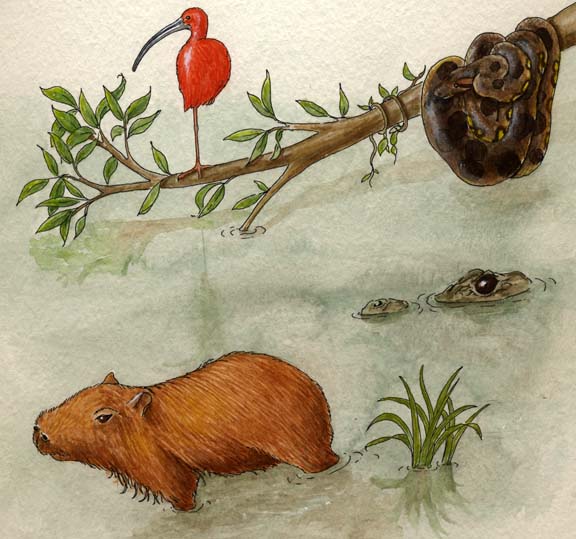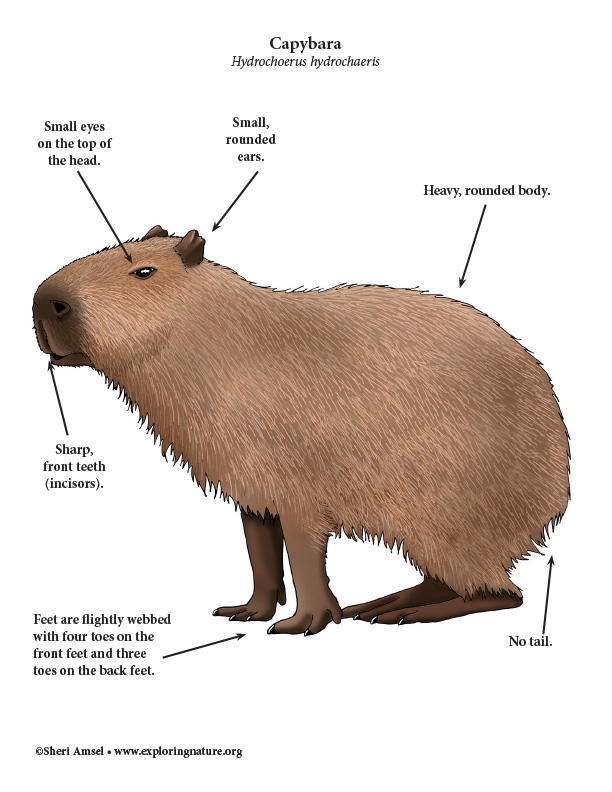

The capybara is found in Central and South America; in Panama, the Andes Mountains, Columbia, Uruguay, Brazil, and Argentina.
They live in thick, brushy areas, always near water. They are found in the Amazon Rainforest.
They are the largest rodents in the world. Rodents are a family of mammals that gnaw (chew) with 2 pairs of sharp front teeth called incisors. Capybaras have round bodies. They weigh from 75-140 pounds (females are slightly larger). They grow to more than 4 feet long. Their color is from yellow-brown to reddish.
They are active mostly at night (nocturnal). They rest in their burrows during the day. They live in large groups of 20 or more. They have 1 lead male and several females and smaller males. They bark and whistle to communicate with each other.
They eat water plants, grass, vegetables and tree bark.
Predators that eat them are anacondas, caimans, jaguars and man.
The females are pregnant for 4-5 months (gestation). They have about 5 babies. They usually have 1 litter a year, but sometimes have 2 litters. All the females share taking care of the babies.
They can live 8-10 years in the wild. They are not endangered in farming areas, but capybaras along the Amazon River are greatly reduced because of habitat loss.
Kingdom: Animalia
Phylum: Chordata
Subphylum: Vertebrata
Class: Mammalia
Order: Rodentia
Suborder: Hystricomorpha
Family: Caviidae
Subfamily: Hydrochoerinae
Genus: Hydrochoerus
Species: Hydrochoerus hydrochaeris
When you research information you must cite the reference. Citing for websites is different from citing from books, magazines and periodicals. The style of citing shown here is from the MLA Style Citations (Modern Language Association).
When citing a WEBSITE the general format is as follows.
Author Last Name, First Name(s). "Title: Subtitle of Part of Web Page, if appropriate." Title: Subtitle: Section of Page if appropriate. Sponsoring/Publishing Agency, If Given. Additional significant descriptive information. Date of Electronic Publication or other Date, such as Last Updated. Day Month Year of access < URL >.
Amsel, Sheri. "Capybara" Exploring Nature Educational Resource ©2005-2024. December 13, 2024
< http://www.exploringnature.org/db/view/Capybara >

